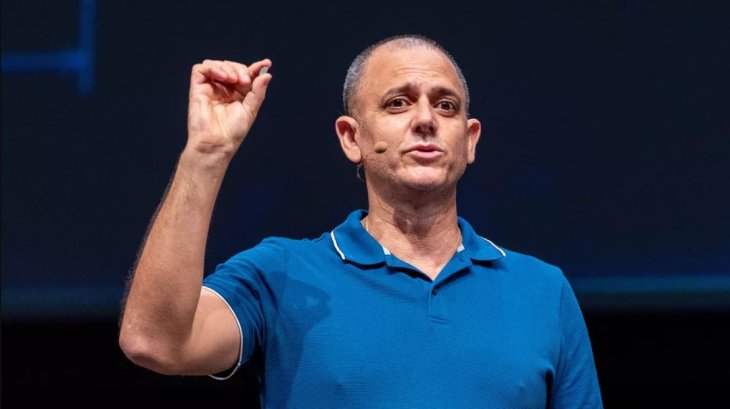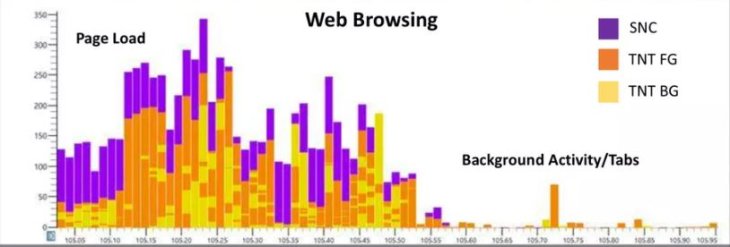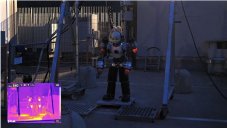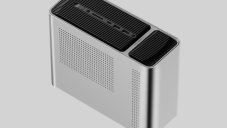Intel Is Testing Its New Power-Sipping Lakefield Chip For Ultrathin PCs
Dhir Acharya - Aug 21, 2019

Intel is developing a new chip called Lakefield which is groundbreaking in terms of packing significant performance in such a small component.
- Intel Announced 11th-Gen Rocket Lake Processors, Rivaling AMD Ryzen Chips
- Like A Sci-Fi Movie, A Nail Salon In Dubai Is Offering Microchip Manicure
- Qualcomm Announced Snapdragon 888, The Next Mobile Chip For High-End Smartphones
Intel is developing a new chip called Lakefield which is groundbreaking in terms of packing significant performance in such a small component.
Lakefield makes use of a new technology developed by Intel named Foveros, which allows the company to stack different parts of the chip onto different layers. That means Intel can make a processor that’s closer to the 12x12mm size of smartphone processors for Lakefield. At 144 square millimeters, the chip is still bigger than the A12 chip of Apple which measures 83 square millimeters; however, it is small enough for manufacturers to make smaller circuit boards, partly because it has its own memory hence more free space.

According to Intel’s senior principal engineer Wilfred Gomes, who spoke at the Tuesday Hot Chips conference held at the Stanford University Campus, Lakefield's board area is half as large as other boards they have done.
Not only small, but Lakefield will also have another interesting feature: when the device is in standby mode, the chip will make it use much less power and the device can last all day on one charge. Qualcomm is also touting this feature in attempts to bring its mobile processors to the computer market.
Nathan Brookwood, an analyst from Insight64 said:


In recent years, Intel has been struggling as the smartphone chip industry has turned into a premium market attracting the best engineers, the fastest growth, and the latest production processes. After years to efforts, Intel still failed to bring its chips to smartphones. Furthermore, it has faced difficulty in upgrading its manufacturing technologies to make smaller chips with new features.
Lakefield represents an answer for Intel’s effort to stay in the competition even though it’s meant for ultrathin computers rather than phones. The company has been revealing several unusual designs, some with dual screens that it hopes to pack Lakefield inside. As stated by Brookwood, multi-chip stacking can result in new form factors.
Hybrid design featuring big and little cores
Intel’s Lakefield takes advantage of a hybrid approach that has long been championed by Arms, its biggest rival, whose chip designs dominate today’s smartphones. In particular, the chip combines one powerful chip core with a bunch of smaller, more power-efficient cores. While Arm names this “big.little,” Gomes tries to position Intel’s chip as “big.big.”
Like the new Ice Lake, Lakefield has one big core. But then, it has four smaller Atom “Tremont” cores to take care of tasks such as background processing or ones that don’t require top speeds.

While Intel is struggling, Lakefield hints a power source for the company: packaging. There is a number of ways in which it can attach chip components to one another and transfer data among them, which means the chips can be flexible enough for various tasks.
Mix and match
With Foveros technology, Intel can take advantage of the mix-and-match approach. It can make a combination of high-performance cores featuring the latest production technology and other components which are optimized for older production processes. Hence, the company can draw more benefits from its existing work.
Gomes said that Intel is currently testing Lakefield prototypes and still holds up one prototype for an elite audience among hundreds of top executives and chip designers in Silicon Valley.

Featured Stories

ICT News - Dec 25, 2025
The Visibility Concentration Effect: Why Half the Web Isn’t Qualified Anymore

ICT News - Jul 05, 2025
Windows 11 is Now the Most Popular Desktop OS in the World

ICT News - Jul 02, 2025
All About Florida’s Alligator Alcatraz: A Smart Move for Immigration Control

ICT News - Jun 25, 2025
AI Intimidation Tactics: CEOs Turn Flawed Technology Into Employee Fear Machine

ICT News - Jun 24, 2025
Tesla Robotaxi Finally Hits the Streets: $4.20 Rides That'll Make You Hold Your...

ICT News - Jun 24, 2025
World's First Flying Humanoid Robot Takes Flight

ICT News - Jun 24, 2025
When Closed Source Met Open Source: Bill Gates Finally Meets Linus Torvalds After...

Gadgets - Jun 23, 2025
COLORFUL SMART 900 AI Mini PC: Compact Power for Content Creation

ICT News - Jun 22, 2025
Neuralink Telepathy Chip Enables Quadriplegic Rob Greiner to Control Games with...

ICT News - Jun 20, 2025
Comments
Sort by Newest | Popular